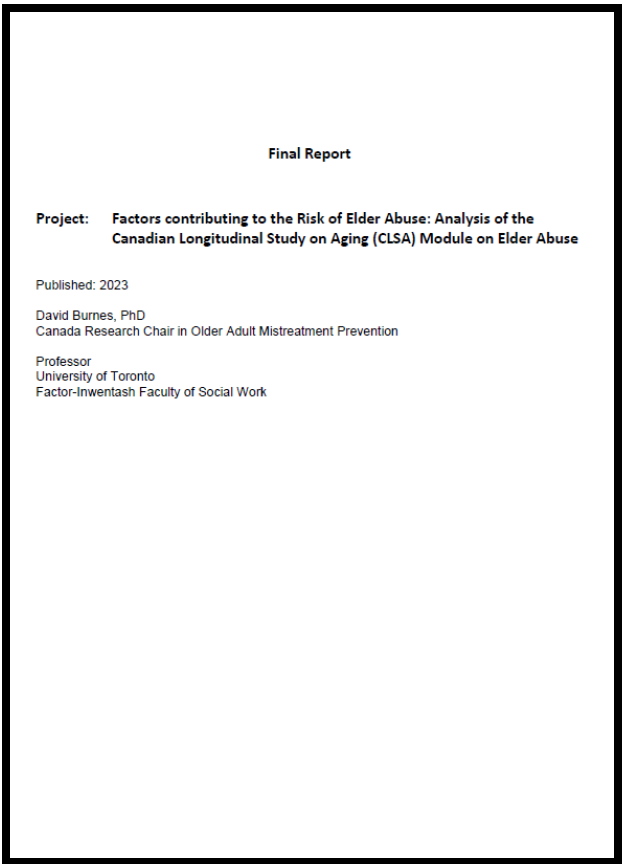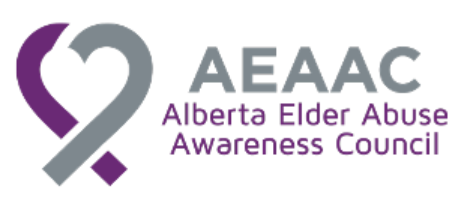The development of effective elder abuse prevention efforts requires a sound understanding of the risk and protective factors that increase or decrease the likelihood of victimization. The existing literature on elder abuse risk and protective factors is largely based on studies that use convenience sampling or cross-sectional methodological designs that limit our capacity to make valid, causal inferences.
Extending previous research, the current project used data from the Canadian Longitudinal Study on Aging - a population-based cohort study – to identify elder abuse risk and protective factors. This study used baseline (2015) characteristics or changes in characteristics over a three-year period to predict the prevalence and severity of elder abuse at follow-up (2018). Predictor variables spanned several domains of potential risk or protection (physical, cognitive, psycho-emotional, childhood experience, home living, social support, and socio-demographic) to understand the likelihood of overall elder abuse and separate subtypes (emotional abuse, physical abuse, financial abuse).
Findings from the CLSA indicate that elder abuse is widespread: one out of every ten older adults reports experiencing some type of elder abuse each year. This finding may under-estimate the true population prevalence of elder abuse due to known under-reporting on the topic, as well as the incomplete scope of sub-types covered in the project. The CLSA assessed three of the five commonly recognized sub-types: emotional, physical and financial abuse.
Abuse against older people often targets those most vulnerable: older adults living with or developing vulnerabilities over time related to physical health, functional capacity, cognitive capacity, and/or mental health are more likely to report elder abuse. On the other hand, various forms of social support serve to protect older adults from elder abuse, including engagement with in-person or online social networks. Findings also point to a life course component of abuse and violence: respondents who reported experiences of childhood maltreatment were also more likely to report elder abuse in older adult adulthood.
Given the prevalence of elder abuse among older adults in the general population, the development of effective prevention interventions is urgently required, and findings from the current project can help inform such efforts.
Published: 2023
David Burnes, PhD Canada Research Chair in Older Adult Mistreatment Prevention
Professor, University of Toronto Factor-Inwentash Faculty of Social Work


















